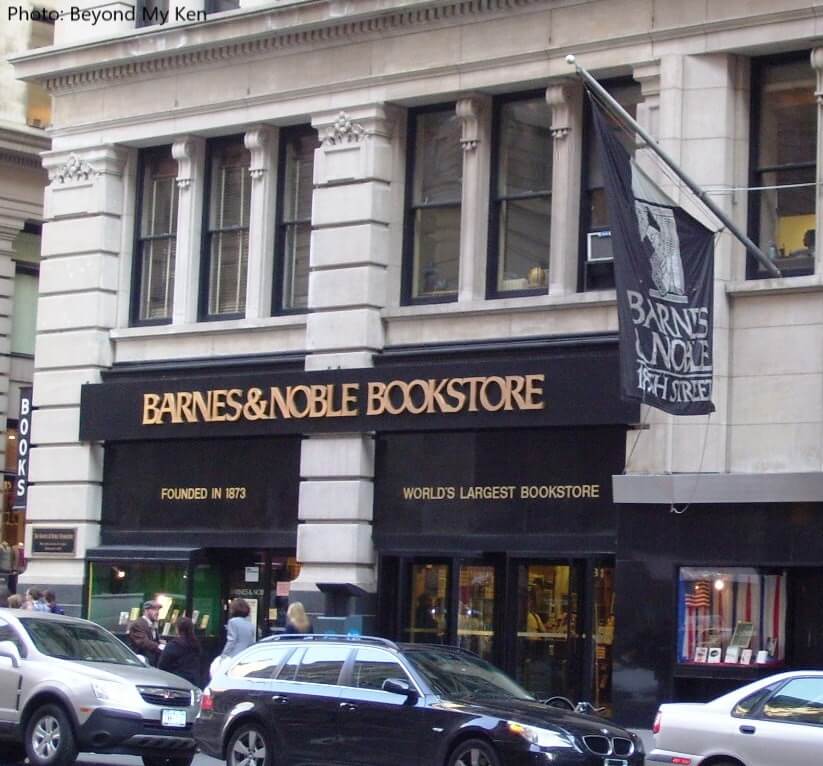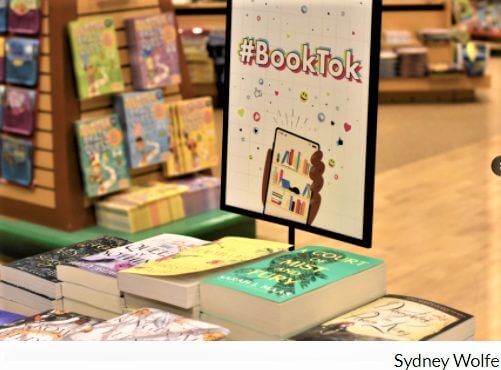
In 1873, Charles M. Barnes opened a small book business from his home in Wheaton, Illinois. His son, William Barnes carried the torch forward and alongside Clifford Noble, they opened the very first Barnes & Noble (B&N) bookstore in 1917 on Fifth Avenue in New York City. The store began to flourish, gaining it a reputation for excellence. In 1971 Bookseller Leonard Riggio acquired Barnes & Noble and merged it with his own bookselling enterprises. With 150,000 book titles, the Barnes & Noble Fifth Avenue store soon became known as “The World’s Largest Bookstore”. There was much expansion over the next two decades, and by 1987 a large acquisition saw 797 retail bookstores. (Barnes & Noble History). However, the only constant in life is change, and Barnes & Noble’s growth met some unprecedented challenges over the last decade.
“It’s not a question of whether or not we will encounter a storm, but when and how we will navigate and survive the test.” – Pat Day
The emergence of the digital era opened a variety of new prospects for the publishing sector. More and more readers have shifted to include eReaders and audio books in their reading routines. For soley brick and mortar bookstores, this shift has significantly cut into their revenues. Why would someone drive to a book store, when they can simply pop online and instantly download a book?
Like most businesses, foot traffic significantly decreased during the pandemic. As reported by The List, “Before the COVID-19 pandemic, Barnes & Noble saw a monthly average of approximately 110,000 visitors, with a spike to nearly 200,000 during the holidays. As people were navigating safety precautions in the spring of 2020, foot traffic dropped to barely 20,000. The following summer, masked shoppers began to re-enter stores six feet apart and foot traffic rose to an average of 90,000 visitors each month. While Barnes & Noble has recovered from its 2020 slump, trends have not returned to their pre-pandemic averages. It seems that shoppers are now less likely to spend their days strolling through the fiction aisles.”
Embracing Change
In 2019, shortly after B&N’s sale to Elliott Management, James Daunt enters to take over as CEO. A veteran independent bookseller in the UK, Daunt had already executed a turnaround for the Waterstones book chain when he was asked to lead B&N. At this point, B&N was at risk of meeting the same fate as other big-box retailers. Borders wasn’t able to pivot with the changing times, and in 2011, it filed for bankruptcy protection. In a recent interview with Axios, Daunt shared that,”The company was ‘not quite there but pretty darn close”, in reference to sharing the same fate as Borders.
One of the first items Daunt addressed when he took over was to cut the corporate staff by 50%. In addition, he empowered managers to make decisions about their specific stores, based on location, clientele, and local interest when deciding what books to carry and their store’s layout. Daunt said, “It’s ironic for somebody who runs chains, but I don’t think chain bookselling works. All I’ve done is bring the principles of independent bookselling to a chain and exploded the very notion of what a chain retailer really is.”
At one time in the book selling game, size was a huge advantage. Having massive stores that offered large selections of books used to be a big draw for customers. Buying a book became less of an errand and more of an outing. Often shoppers enjoyed spending time in the bookstore; latte in hand, perusing the bright aisles and colorful titles. However, there are too many overhead costs nowadays in regards to up keeping such a large enterprises. “The trick to being a big-box bookseller is to not be a big-box bookseller”, Daunt said.
The appetites of readers, as well as booksellers, are undergoing a noteworthy transformation. Up until 2019, B&N was still operating under the practice of accepting payments from publishers in exchange for promoting and displaying certain titles. The problem was that publishers were not necessarily in touch with what readers wanted, and didn’t take into account local interests. According to Axios, about 70% of those books were never sold and ended up being returned to publisher. “That’s a staggering statistic when you think about it,” Daunt said, which is why he choose to put an end to that practice and focus on what readers really want. “Returns are a central judgment by your customers as to whether you’ve put the right books in front of them,” he says.
While readers are becoming more focused and tech-savvy, bookstores are looking to create interactive, customized experiences. In August 2020, Kate Wilson, a 16-year-old from Shrewsbury, posted a short video holding up different books and talking about her favorite classic novels. The video has thousands of views. Around the same time, many other enthusiastic teens also started to post videos of themselves sharing their reviews of books, creating the massive trend known as #BookTok. Short for “Book TikTok,” Book Tok is a community of users on TikTok who are passionate about literature and books.
Barnes & Noble choose to embrace this exciting trend by remodeling its stores to make “Booktokers” feel more welcome. They accomplished this by providing colorful shelves and tables filled with popular BookTok titles, as well as offering interesting spaces and backdrops for Booktokers to create content.

Today, only about 9% of overall books carried in B&N stores are returned to publishers. This is a extraordinary reduction from the previous 70% return rate. Daunt is not done however, stating his goal is to get that rate down to 5%.
Looking to the Future
Barnes & Noble is making changes to its membership programs as well. As reported by BookRiot, “The former program, which cost $25 a year, gave members 40% off hardcover bestsellers, 10% off all in-store purchases, free shipping online, and a few bonus perks through the year.”
Barnes & Noble has decided to create two new tiers of programs. The first tier, a Premium Membership, will cost $40 a year and comes with many perks. Members will received 10% off almost everything in store and online, as well as offering a free size upgrade on in store cafe beverages. As well, Premium Members will receive an annual gift (free tote bag), free shipping, and a new stamp program. For every $10 spent members receive a stamp and 10 stamps equals a $5 reward when spending over $100. The second membership option is free, and those who register will be enrolled in the stamp program.
Currently B&N has about 600 locations, and for the first time in recent memory, it plans to expand. Their goal is to open thirty net new stores which will create jobs, help to revitalize retail spaces, and an increase the local economy.
Book sales went up during the pandemic, and Daunt acknowledges that the company was “very fortunate” to benefit from the increase, “All the winds have suddenly swung in our favor.” Daunt seems very aware that one cannot sail a ship alone, acknowledging the contributions of his leadership team as well as the front line employees. B&N identified talented leaders in their stores, offering them more leeway to manage certain aspects and decisions at their locations. From an outsider’s perspective, it seems the real “fortune” experienced by the 150 year-old company was achieved when they decided to hand the helm over to Daunt and his forward, innovative and creative thinking.
(adsbygoogle = window.adsbygoogle || []).push({});
(adsbygoogle = window.adsbygoogle || []).push({});
The post How Out of-the-Box thinking saved Barnes & Noble first appeared on Good e-Reader.
